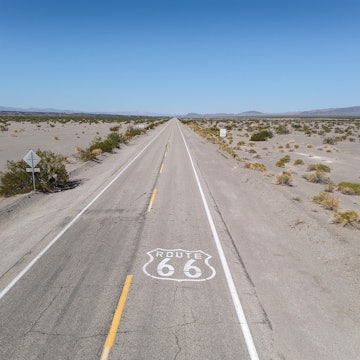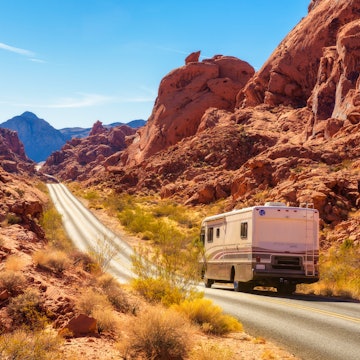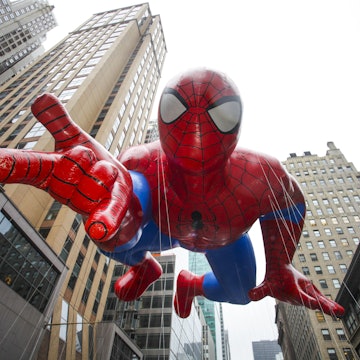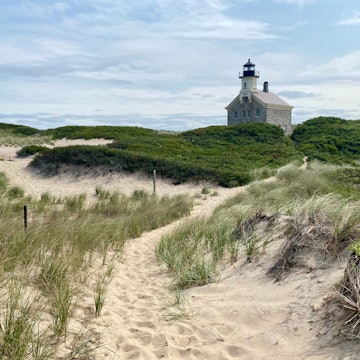
COVID took my job and my home - so I hit the road in a camper
Mar 12, 2021 • 12 min read

Greyson with one of the two rescue dog companions he's traveling with. ©Greyson Ferguson
When the world shut down with COVID-19, Greyson Ferguson bought and renovated a 1960s camper, and took the opportunity to see the United States in a way he never expected.
Editor's note: during COVID-19 there are restrictions on travel. Check the latest guidance in the United States and always follow local health advice.
A year ago things were looking good. My freelance writing career continued to progress nicely, a publisher requested a draft of my novel, and I finally had the money saved up to move out of Arizona and make the trek to Philadelphia. Without a care in the world and everything going my way, my move-out date at the end of March 2020 couldn’t come fast enough.
I just didn’t anticipate March coming in with a sledgehammer. As the month progressed and COVID-19 took hold, what I thought looked up suddenly looked anything but. Freelance jobs froze or stopped altogether. The entire east coast of the United States locked itself down. Moving companies stopped renting equipment. Suddenly, without steady work or even a city to move to, I found myself scrambling.
I’d already put in my move-out notice and the Arizona apartment had rented out my space, so I couldn’t extend the lease. Philly, along with the rest of the East Coast, was locked down tight. I’d saved a little over $6000 for the move, which I knew I’d burn through quickly unless freelance work came back quickly. But, with every news report and daily White House briefing, confidence in that potential faded quickly.

I opted for the only idea that made any logical sense to me: buy a cheap camper, travel the US rent-free, and work the remaining freelance gigs I still had from national parks.
With my move-out date fast approaching, I didn’t have the time to buy one in Arizona, so I packed up my things and moved them, along with my two dogs, back to my childhood home in Michigan where I could stay with my mom while searching for the right camper.

First tip for buying a campervan in a pandemic – if you see one for sale, offer to buy it instantly. If not, someone else will. With nearly all forms of summer vacation on hold, people were snapping up campers at record numbers. So, when a 1960s travel trailer went for sale I drove to the other side of the state to buy it. I had no idea what to look for, other than to check for wheels and a door (some of the campers I saw had neither).
Hitting the road in a camper, with no plan
In truth, I had very little planned out. I’d follow the changing foliage north, across the Mackinac Bridge, and then, to wherever imagination and road would take me.
It rained the first night, but what would a voyage be without a proper christening? The following morning the rain escorted me to my first site 500 miles from my departure location I arrived in Ottawa National Forest in the upper peninsula of Michigan. Eventually, birch trees took the place of rain as a sea of yellow leaves and whitebark swallowed me whole. The forest directed me away from the highway. Away from humanity. Eventually, it emptied me out onto a small, private beach, overlooking the wide river.

Why I wanted to freedom camp
After five days I left my river overlook. I wanted to stay longer. Not only for the view, but the true expense of such a journey lies with gas. At ten miles a gallon, the more I drove, the more costly the trip would become. I didn’t know how long water would last or how quickly the dogs would chow through their food. I knew the first few stops would offer more guidance to what I should expect moving forward.
Traveling in a trailer or camper can be as cheap or as expensive as you want to make it. The longer you remain in one location the less expensive it becomes (most spots allow for up to 14 days, with some exceptions). Yet water and weather dictate the length of any stay as much as the desire to move on. To reduce water usage I’d avoid cooking with it.
I didn’t plan on paying to camp anywhere. At least whenever I could avoid it. RV parks didn’t attract me. Paying $60 a night to park five feet from the next RV and share accidental, awkward eye contact while taking a morning constitutional didn’t sound enticing. I wanted to freedom camp, aka not connect to water or electricity and just be out, in the middle of nowhere, as much as possible.

To help aid in that quest, I purchased an America The Beautiful national parks pass. I also discovered the world of the Bureau of Land Management, which is basically government land available to plop down on, only without the fanfare and advertising.
And, when free camping didn’t make itself available, I found myself stopping more than a few times at, yes, Walmart. Not every Walmart allows overnight parking, and they won’t come out and ask you to move during daylight. You’ll receive a flashlight tap on your window at 2 am, instructing you to move. So it’s best to call ahead or pop in and ask Customer Service.
Traveling in a camper in winter
As is the case in life, timing is everything. I left Michigan in early October in hopes of escape before the snow hit. I twisted through Wisconsin and Minnesota, skies threatening to burst, but the cloudy dams held winter at bay. I drifted into North Dakota and the Badlands National Park before heading south (The Badlands National Park is 800 miles west from my Ontonagon River, Michigan stopping point).

I navigated through eastern South Dakota, a truly breathtaking drive, with small lakes and waterways lapping up to the highway’s edge like a curious pup sniffing at her bowl of food for the first time.
The road took me into Nebraska, and after a few dead ends, parks closed due to COVID, and a Walmart night tucked in there somewhere, I ended up staying inside the Nebraska National Forest (220 miles Southeast from The Badlands). A hilly, wooded, secluded area, I had no idea Nebraska offered more scenery than waving husks of sun-kissed corn. The forested rock formations gave me a window into the soul of a state I never knew existed.
Other stops did not prove as lucky. Numerous entrances into the Rocky Mountains were blocked due to forest fires, while other national forest offshoots were closed for the season, as local park departments didn’t want to deal with snowed-in campers. To compound the issue, city ordinances throughout Colorado make sleeping overnight in a car illegal, so my time in the state proved shorter than sweet.

COVID-19 hindered much of New Mexico with the state government shutting down state parks to outsiders. Eventually, I found myself looking into the political leanings of each state, simply because it offered a window into how much, or how little, would be open upon my arrival.
The journey is what you make it
With such a journey, no two are the same. My path will differ from yours. You can learn from my mistakes. Take stock in my own lessons on the road. And yet the adventure will be all yours and only yours.
You’ll discover the calming serenity of making coffee in your camper as the steam embraces your face while you’re surrounded by nothing, and yet everything. You’ll experience unexpected detours, which may open you up to adventures completely unexpected. You’ll find a thrill in meeting other travelers who share a similar passion for the road, yet come equipped with a completely different backstory.

It’s not all fun and games. There’s sitting in traffic because the two-hour drive into the Florida Keys turned into a seven-hour drive due to an accident. There’s having someone park you in and the need to wait for that driver to return before you can leave. There’s after-midnight security knocks and people questioning your decisions to travel indefinitely in a camper.
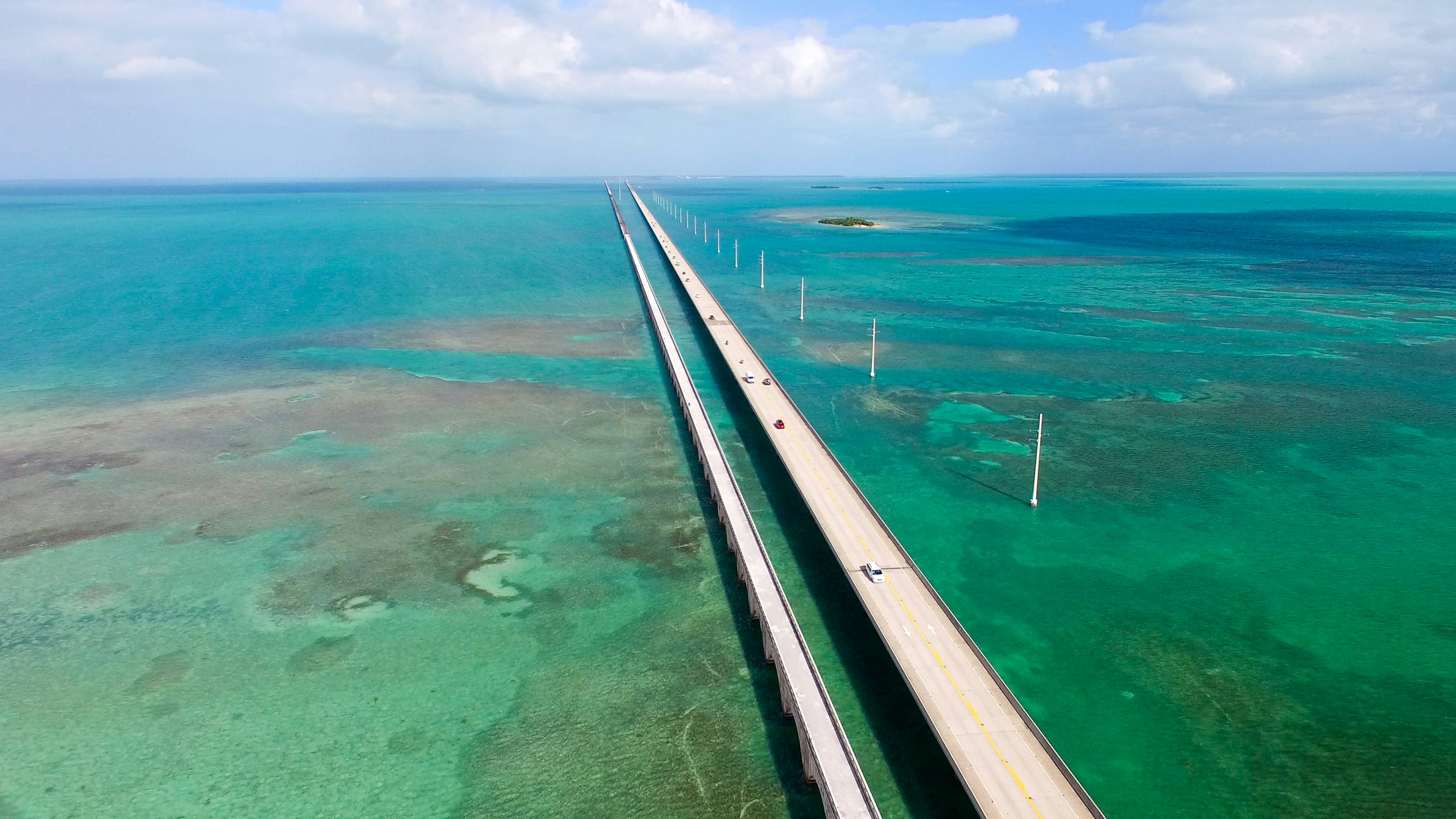
But that’s okay. Because it’s your own journey, your own adventure, and that’s what makes it special. Regardless of how you started it. Or where you want it to take you. Who knows though, as my drive continues we may eventually cross paths.
Traveling with pets in a camper
I never thought twice about bringing my dogs with me. A senior golden/springer mix and a three-legged pit, I wouldn’t have dreamed of leaving them behind. The pit handles driving just fine. Most days I see her watching the world pass by like a grandmother sipping sweet tea from her porch, waiting for the birds.
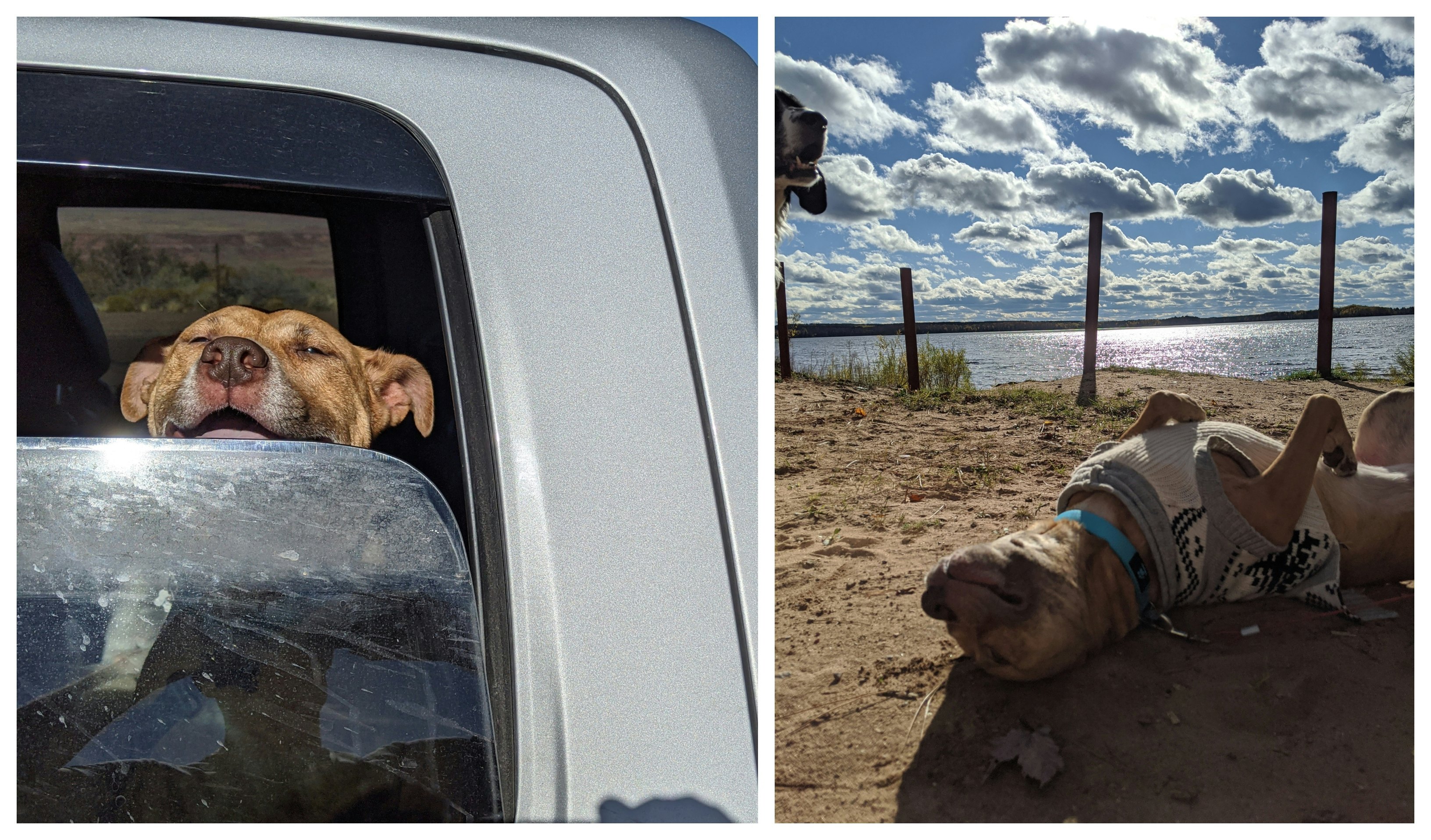
The other dog? Well, she has some road anxiety. If driving days are spread apart and we’re on the highway she’s fine. But stop-start traffic leads to heavy panting, strange whimper-coughs, and excessive drooling. I’ve found if I take her for a long walk before jumping into the truck she’s too worn out for anxiety. Other than that, I’ve tried CBD and hemp treats for dogs, the vet said to test out motion-sickness medicine, but nothing helped. Thankfully, as long as we’re moving and the windows rolled down, she enjoys the wind in her face.
Tips on buying a campervan
I did learn a thing or two about buying a retro camper. For starters, if the seller says it’s never leaked before, they are either bull-face lying, or they’re clueless. The thing is 60 years old. It’s made out of aluminum and plywood. It’s leaked. Probably all over. I spent most of my renovation time ripping out and replacing walls, which led me to another discovery: old campers have next to no insulation. So I pumped the camper full of it.

But let’s say you’re shopping for a camper and it’s not in the midst of a pandemic. There are pros and cons to just about any design. A camper van is easy to drive, there’s no towing to deal with, and it’s super easy to stealth camp (aka pull over and sleep in the vehicle). However, if you have a campsite and need to leave for whatever reason, you won’t have a vehicle to leave behind and mark your territory. With a travel trailer, it’s easier to set down the trailer and drive off. So you have more flexibility with a trailer, at the expense of dealing with towing.
Something to also consider is the total length (from the bumper of the van/tow vehicle to the end of the trailer/camper). Several national parks have length restrictions. Parks like Yellowstone allow up to 40ft, but some national parks, usually those with slender, twisty roads, may allow a maximum of 27ft. With a camper van, this isn’t a problem, but if you’re towing the travel trailer it’s something to consider (my pickup, for example, is about 18ft, which means if I purchased a 23ft trailer I’d be too big to drive through most national parks).

For anyone interested in renovating their own retro camper there are some great books, YouTube channels, and blogs out there. My personal suggestion would be to insulate the floor. It’s nothing but a subfloor and laminate on top. Floor insulation goes a long way in keeping the cold out. Beyond that, paint the entire interior with cabinet paint. It’s more durable and forgiving than regular wall paint. Also, don’t upholster with white fabric. Why I thought this would work when traveling with two dogs I’ll never know.

Essential gear
Campers are made to be lightweight. That also means it’s going to break down. Whether it’s 60-years-old or six-months-old, it’ll run into problems. It’ll spring leaks. Something will gouge the floor. A panel will pop open. A solid battery-powered drill might be the MVP of any tool kit. I carry both wood screws and self-threading metal screws. Rubberized aerosol cans are also great for quick fixes or for waterproofing repairs.

Maintain a spare gas can and keep it full. It’ll help in a pinch, and it’s there should you need it for a gas generator. Speaking of generators, I invested in two when I was starting out. One gas and one solar. It’s important to not go cheap on either of these. I bought a cheap gas generator and it worked three times before dying (when buying a gas generator opt for an inverter generator, not one of those construction site generators. Those are loud, obnoxious, and everyone within 10 miles will hate you). As for a solar generator the bigger you can afford the better. These things are truly fantastic, make zero noise, and can pull a charge from your car battery while driving (as long as you’re driving it won’t run the battery down). When shopping for a solar generator/battery bank look for one that allows you to charge it while using its power bank at the same time. You’ll pay a few bucks more for that feature, but needing to disconnect from your power source because the sun’s out and you want to charge is frustrating.
The internet
This was my biggest concern when researching my journey. How in the world could I continue working and connect to the internet when in the middle of nowhere? Sure, my cell phone plan says “unlimited”, but after about 10 gigabytes worth of data, the cell company throttles it down to unusable.

After all kinds of research, I came across a $40 cell service called Visible, I’ve run my laptop, watched Hulu, streamed music, the Super Bowl, and everything else without any issue. Just turn the phone into a hotspot and it’s good to go.
You may also like:
The best destinations for camper van travel
Is a camper vacation right for you?
Is glamping going to be the new social distancing travel trend?





